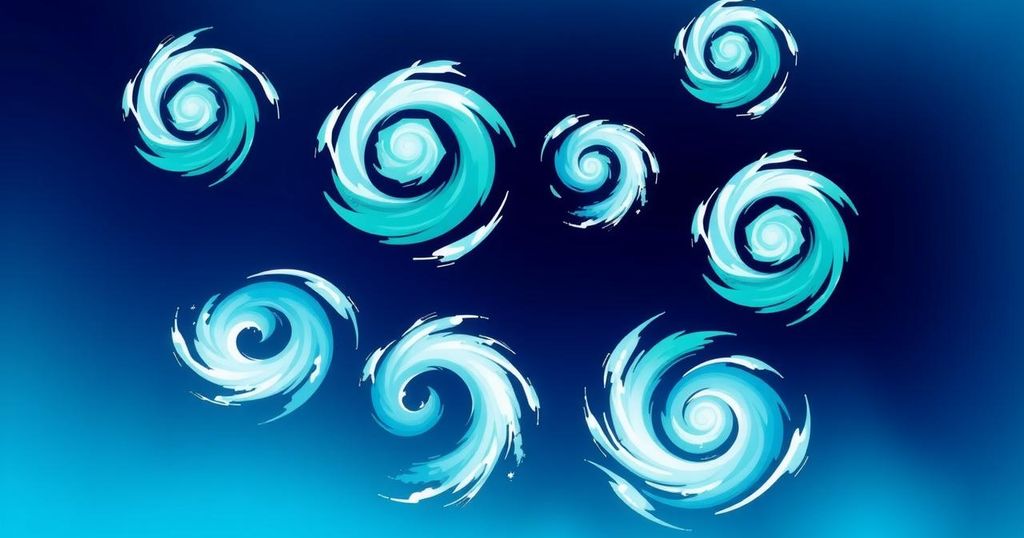Simultaneous Activity of Six Cyclones in the Southern Hemisphere

On Tuesday, six tropical cyclones became active simultaneously in the southern hemisphere. These include Cyclone Alfred, which reached Category-4 intensity, causing Australia to issue warnings. Cyclones Rae and Seru impacted Fiji and nearby regions, while Severe Tropical Cyclone Bianca operated in the Indian Ocean without landfall. The occurrence of multiple cyclones underscores the intricate nature of tropical weather systems.
On Tuesday, an extraordinary meteorological occurrence was observed as six named tropical cyclones were simultaneously active in the southern hemisphere, notably with three situated in the southwest Pacific. Severe Tropical Cyclone Alfred, which originated on February 20 in the Coral Sea, reached an intensity akin to that of a Category-4 hurricane, featuring sustained winds of 105 mph (170 km/h) and gusts around 140 mph.
Alfred is advancing southward, running parallel to the coast of Queensland, prompting warnings of strong winds and turbulent seas. Although it is not projected to make landfall, the Australian Bureau of Meteorology continues to monitor its movement due to uncertain proximity to the coast.
In the eastern region of the southwest Pacific, two shorter-lived storms emerged, namely Rae and Seru, with maximum intensities comparable to a Category-2 hurricane. Cyclone Rae developed on February 22, just north of Fiji, while Cyclone Seru commenced on February 24 over the southernmost Solomon Islands and proceeded southward, passing east of Vanuatu and New Caledonia.
Cyclone Rae resulted in considerable devastation in parts of Fiji, attributed to intense rainfall, gusts reaching approximately 100 mph, and massive waves. Meanwhile, Severe Tropical Cyclone Bianca was active from February 18 to 27 in the Timor Sea, reaching a peak intensity equivalent to a Category 3 hurricane without making landfall, as it evaded the continent by altering its trajectory.
In the southwest Indian Ocean, two additional cyclones developed, bracketed by Madagascar and originating on Monday. Intense Tropical Cyclone Garance, a Category-3 equivalent storm, formed northeast of Madagascar and later moved south, potentially impacting Réunion Island with gusts of up to 120 mph and rainfall of 600 mm. Concurrently, Severe Tropical Storm Honde, classified as a Category-1 equivalent, formed in the Mozambique Channel and is slightly skirting the southern tip of Madagascar.
While having multiple named storms active at the same time is not common, it is not entirely unusual. The Pacific Ocean has recorded six simultaneous storms once prior in August 1974, whereas the Atlantic’s highest was five storms in September 1971.
The simultaneous activity of six tropical cyclones in the southern hemisphere is a testament to the complex dynamics of meteorological phenomena. With Cyclone Alfred exhibiting severe intensity and Rae inflicting damage in Fiji, the situation remains critical. The development of Garance and Honde further illustrates the breadth of cyclone activity, underlining the significance of continued monitoring and preparedness.
Original Source: www.theguardian.com






